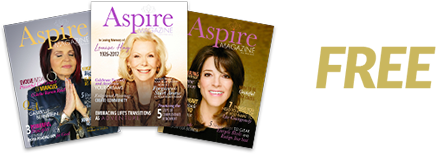
Have you ever considered your Emotional Age or how old you feel “on the inside?”
Unlike Biological Age, which determines our state of physical health and wellness regardless of our chronological age, Emotional Age is how empowered or disempowered we think, act, and feel. It’s how we show up in the world.
For example, we’ve all seen those sixty-plus-year-old people behaving like angry teenagers when upset—yelling, screaming, slamming doors, and stonewalling. Conversely, we’ve also witnessed the young, twentysomething-year-olds who carry the weight of the world on their shoulders, acting way too mature for their age, silently burdening their worries and fears while taking on those of their loved ones. We often call them old souls when, instead, perhaps they are simply showing up with an older Emotional Age than their peers.
Emotional Age helps explain how we’ve been communicating, compromising, negotiating, socializing, and interacting with others; it drives most of our choices, even the most insignificant ones, whether we realize it or not.
The more empowered (not necessarily “older”) your Emotional Age, the better your life will be! The best part is that managing your relationships gets much easier once you understand your Emotional Age and can recognize it in others.
The Empowerment Spectrum
The Empowerment Spectrum outlines the concept of our identities being formed by a combination of three Dominant Emotional Archetypes—the Parent, the Child, and the Adult. Within these three archetypes, we communicate on a scale from passive (disempowered) to peaceful (empowered).
For years leading up to writing about Emotional Age, I’d half-jokingly refer to these three Dominant Emotional Archetypes as my “Mother Energy,” “Daughter Energy,” and “Woman Energy.” The interesting thing was how everyone seemed to understand what I meant when I used these terms. They seemed universal—as if everyone had these same three personas that ran their lives, too.
Without realizing it, our behavior is usually dictated by one of these Three Dominant Emotional Age Archetypes, depending upon the person we’re dealing with; often, one of these archetypes will dominate most aspects of our life.
The most important thing to remember is that you formed your Dominant Emotional Archetype to protect you until you felt safe enough to be your Real Self—to show up as the Adult or in Woman Energy, wherever you go, no matter who you’re with.
The Parent Archetype
The Parent Archetype is the selfless part of us that gives, protects, and serves. The needs of others are always more important than those of the Parent, and they feel bad putting themselves first.
Although the Parent Archetype is the most selfless of all the archetypes, selflessness doesn’t always equate to the happiest or most harmonious. Sometimes, over giving creates resentment and a lack of joy. Self-abnegating to a fault, the Parent Archetype puts everyone else first—children (if there are any), work, partner, parents, pets, friends, neighbors, community, and commitments—which means the Parent Archetype isn’t always the most fun to hang out with. They’re so busy caring for others that they forget to take care of themselves. Who has the time? The simplest way to explain the Parent Archetype is “chronic neglect of Self.”
If only the Parent Archetype could balance their selflessness with a little more selfishness, self-advocacy, and self-care, they would feel happier, more relaxed, and empowered. Not to mention, they’d be more fun to hang out with! Besides, although others view them as noble and even saintly, they know they’re flying under the radar, playing it small in their own lives. It’s about time the Parent started parenting themselves better!
The Child Archetype
The Child Archetype is the selfish part of us that wants, takes, and desires. Fearful and gripping, this archetype drives us to take care of our own needs before the needs of others.
The Child Archetype is the complete opposite of the Parent Archetype. They need too much. Expect too much. Demand too much. Feel too much. Often extremely emotional, nothing is ever middle of the road with them.
Overwhelmed by emotion, those who embody the Child Archetype know there is more to life . . . and they want it! They just don’t always know exactly what that is, what it looks like, how to receive it, or how to keep it. The fear of never knowing their future is safe makes them feel frenetic and overwhelmed.
The Child Archetype constantly searches for more, asking for more than most people can give; they create situations in which their own personal power is tested, and they constantly test the people in their lives, too.
Now, don’t get me wrong, these people can bring a lot of fun and excitement to their relationships. When they are good, they are very, very good! But the extremes with this archetype can quickly turn fun into trouble and excitement into chaos. The Child can’t help it. Something has happened to make them distrustful of other people. They don’t want to grow up. Maybe becoming the Adult scares them because they don’t want to get stuck. They need to keep all their options open.
The Adult Archetype
The highest or greatest expression of who we are (and the ideal place to be on the Empowerment Spectrum), the Adult Archetype can give and receive love equally, care for and be cared for, and give and take in all the right amounts. They are empowered, confident, kind, self-assured, and wise!
The Adult Archetype is the integration and transcendence of the noblest qualities of the Child and Parent Archetypes into the fully empowered Self. It is the part of us that balances the Self in a way that expands outward without losing connectedness inward.
The Adult Archetype has taken the journey, walked the path, done the work, healed the wounds, and is on the road to peace. Their lives reflect this inner peace and joy. They are in the flow! They’re on The Emotional Edge: the perfect balance of following and honoring their own path while maintaining their commitments to others.
With a full ascendance of the Parent Archetype and the Child Archetype, the Adult Archetype embodies the noblest aspects of our selfishness and selflessness, aka the Self. It is a balancing act, but the Adult innately knows how to maintain it.
The Adult Archetype is comfortable with themselves and within the world; they see the bigger picture and are aware of global struggles, concerns, and challenges. They feel as though they are following their purpose and passion, contributing to the collective consciousness in a powerful way. They are genuinely happy, confident, calm, and curious.
Stepping Into Your Most Empowered Self
Understanding your Emotional Age can mean the difference between living a life of joy, love, abundance, purpose, and passion and living a life of loneliness, frustration, inadequacy, and fear.
Remember, each archetype—the Parent, the Child, and the Adult—teaches us something or brings something of value into our lives! We’re meant to have aspects of each of these archetypes as part of our personal archetype. The secret is balancing, embodying, and expanding the lower two—the Parent and the Child Archetypes—so that we may transcend into the fully conscious, empowered Adult.
If you’d like to take the Emotional Age Quiz, click here to take it on Oprah.com.
Note: If after taking the quiz, your answers tell you that your Emotional Age is that of the Adult, but your life is not reflecting great health, wealth, love, relationships, and purpose, retake the quiz and tell yourself the truth!
Most of us *know* the correct answers; we just aren’t living it!


